Today, in computing, performance no longer necessarily means a gigantic central processing unit. In office computing, computers have become smaller, with “NUCs” becoming discreet and aesthetically pleasing, like the Acemagic S1, which I'm introducing you to today. This one has some serious selling points: in addition to its attractive compact case, it features dual 4K HDMI outputs, two gigabit Ethernet ports, a very easily modular configuration without any tools, and a front-panel LCD screen displaying various information. A perfect mini PC for the office, but also for use as a powerful home automation system, as we'll see later. Introducing the Acemagic S1 Mini PC When you receive the package, you already know that the Acemagic S1 is very small. It comes in a beautiful black fabric-look packaging with a touch of orange, which really shows off the mini PC.
On the edge, we find a few highlighted features: Intel processor, integrated Wi-Fi, Full HD, and ambient lighting.
Inside, we find the Acemagic S1 perfectly positioned:

We have the mini PC, featuring a matte black and metallic gray finish, accompanied by its power supply, an HDMI cable, a vertical stand, and its manual, which clearly explains how to connect it using various diagrams. Even a beginner will have no problem using it! The Acemagic S1 is truly tiny, measuring about twelve centimeters on each side and about 4 cm thick.

The first notable feature is that the Acemagic S1 has a small 1.9″ LCD screen on the front (170 x 320 px resolution), which can display various information.

On the back, there's a comprehensive connectivity package, including two 4K HDMI ports, two Gigabit Ethernet ports, and a 3.5″ audio output jack. Also noteworthy is the hole for attaching a Kensington lock.

On the top are the USB ports: two USB 2 and two USB 3. This is also where the power button is located, easy to access.

The bottom edge simply has a ventilation grille.

Another very interesting detail: the wall is removable, providing access to the storage and memory:

No screwdriver is required to access it; the front panel is magnetic and detaches simply by pulling on it:

The model tested here is equipped with 16GB of DDR4 RAM and a 512GB M2 SSD, which is already more than enough for office use, here running Windows 11 Pro (supplied already installed). As for the processor, it integrates the latest 12th generation Intel Alder Lake-N97 processor, a quad-core 10nm process offering a maximum turbo frequency of 3.6GHz and 6MB of cache. Finally, it features an Intel UHD Graphics processor clocked at 1.2 GHz, capable of decoding 4K videos in H.265.

Another M2 slot (not NVMe, however, but SATA) is available if you want to expand the storage (maximum 4TB). Only one memory stick is provided, but it already offers the maximum supported by the processor (16GB):

This mini PC can be stood both horizontally and vertically. A small stand is also included to place it upright, also magnetic. This saves space on the desk.

As you can see, the Acemagic is a rather well-designed little computer, with an already nice configuration, but which can be easily upgraded if desired. Technical Specifications:

Components

Specifications


Operating System
Windows 11 Pro Processor
| Intel Alder Lake-N97, 3.6 GHz, 4 cores | RAM |
|---|---|
| 16 GB DDR4 | Storage |
| 512 GB NVMe SSD | Graphics |
| Intel UHD Graphics, 4K Triple Display | Connectivity |
| Dual Gigabit Ethernet, WiFi 6, Bluetooth 5.2 | HDMI Ports |
| 2 (4k@60Hz) | USB 2.0 Ports |
| 2 | USB 3.0 Ports |
| 2 | Audio |
| 3.5mm Jack | Weight |
| 385g | Dimensions |
| 12.8 x 12.4 x 4.1 cm | Using the Acemagic S1 |
| This mini PC comes with Windows 11 Pro already installed. All you need to do is connect the computer to a monitor, keyboard, mouse, and, of course, a power supply to get started. We quickly arrive at the Windows desktop: | Connected here to my 43″ computer monitor (which is actually a 4K TV). The Acemagic S1 supports it without any problems: |
| A quick look at the settings confirms the properties of this mini PC: | And the hard drive, which keeps quite a bit of free space: |
I worked on this computer for a good month, as a daily PC, 10 to 12 hours a day, managing the website, editing images, doing some video editing, working on the Office suite, trading, etc. The Acemagic performs with flying colors, with very reasonable CPU/memory usage:
The computer maintains a balance between silence and good temperature management, creating a peaceful and stable work environment. Perfect for working in good conditions!
I also ran the Acemagic S1 through a few diagnostic tools.

Hard Drive Performance Assessment: CrystalDiskMark 8 Sequential Measurement (SEQ) 1M Q8T1: Read – 1782.40 MB/s, Write – 1711.87 MB/sRandom Duration (RDT) 4K Q1T1: Read – 50.05 MB/s, Write – 133.40 MB/s

Processor Performance Benchmark: Cinebench R23
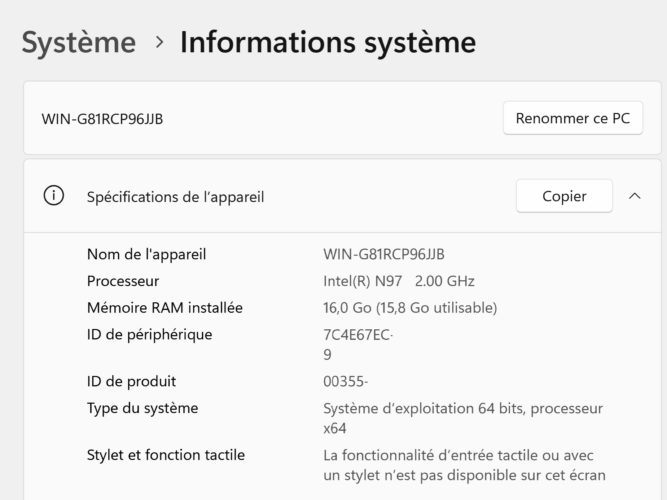

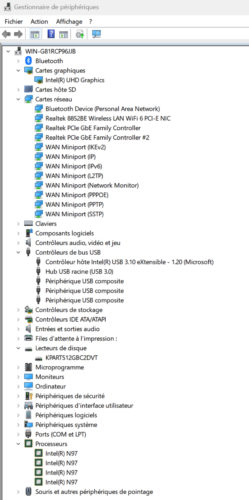
Multi-core test: 2975 points, indicating proficiency for entry-level 3D activities.
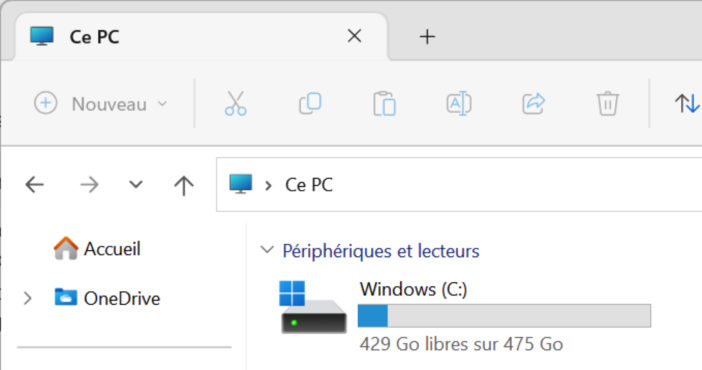
Single-core test: 987 points, indicating suitability for ordinary daily tasks.

General Purpose and Multimedia Performance: PCMARK 10
Overall Score: 3492 points
Fundamentals: 7521 points
- Productivity: 5116 points
- Digital Content Creation: 3004 points
This Acemagic S1 N97 certainly has its limitations, particularly for more graphically intensive tasks like latest AAA video games or 3D modeling. But this mini PC isn't intended for these demanding activities. For office work, multimedia, and low-power games, it's perfectly capable (in fact, even Fortnite runs on it, of course not at max specs, but it works!).
- It's worth noting the presence of dedicated software for managing its mini LCD screen, as well as its RGB lighting. Several preset templates are available, allowing you to display the date and time, CPU temperature, memory load, CPU load, and even fan speed:
- Which actually gives you this:
The application also allows you to change the screen orientation:
- Which gives you, for example:
- It's even possible to customize the background and information display. However, you'll only have the choice of predefined information; it's not possible to display external information from other software:
- The second application allows you to change the lighting border right next to the screen:
- These functions are probably a bit “geeky,” but I really like them :)
A final word on power consumption: this model generally consumes around 10W, and can go up to 20W depending on the tasks it performs. This power consumption is therefore quite reasonable compared to a conventional computer.
A perfect configuration for a home automation box!

Its small size is reminiscent of a home automation box. And it must be said that with its compact size, aesthetics, and performance, it will be perfect for that purpose!
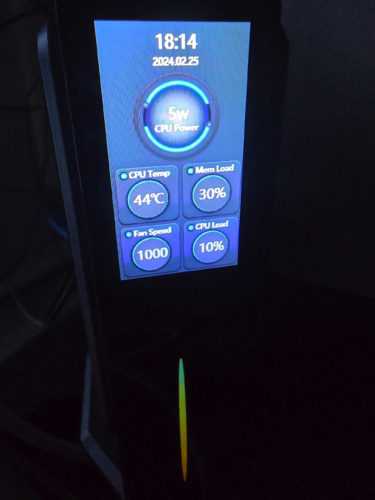

The Acemagic S1 remains a “classic” computer, on which any operating system can be installed, whether Windows, Linux, or any other ready-made distribution. It's therefore quite possible to install a Debian system with Jeedom, or even the complete Home Assistant OS. In fact, given its performance, we'd have a high-performance home automation system here!

The other option is to share its performance by installing a system like

Proxmox VE

for example, allowing you to install multiple virtual machines, especially since this mini PC is compatible with Intel's virtualization technology (which must be enabled in the BIOS).

So I installed Proxmox VE, which is a free, open-source solution perfect for virtualizing machines (when you don't have a NAS, for example). I'll be sharing a guide on this very soon. I currently have three virtual machines running on this Acemagic S1: a Jeedom for testing, a Home Assistant instance that simply hosts ZigBee2MQTT and the MQTT broker, and another Home Assistant instance that is the home automation system itself, to which I'm gradually migrating my entire installation.
For communication, you can also use the official Home Assistant SkyConnect USB dongle, which adds ZigBee and soon Matter compatibility to the home automation system:
This makes for a pretty nice home automation box:
And with about a hundred devices on Home Assistant, and roughly the same on Jeedom, the system handles them without any problems. There's even a significant margin:
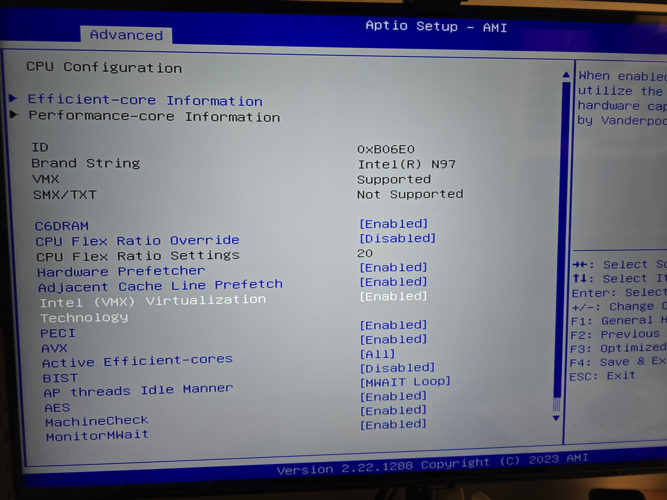
I'm seriously considering making it my home automation hub, I love this little box so much :) In fact, the cost is pretty good, since the Acemagic S1 is available for €202
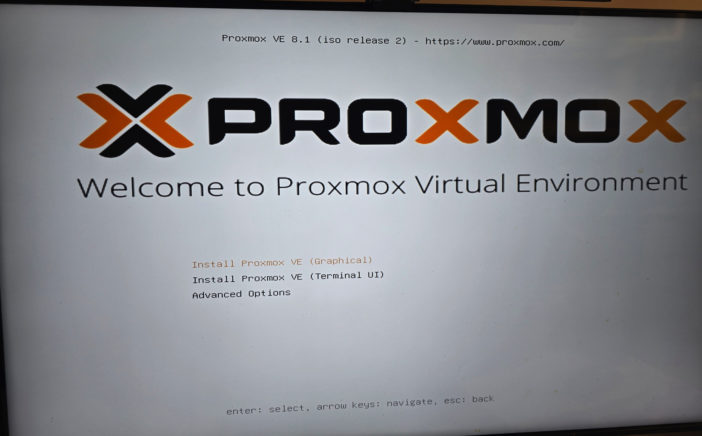
(with the code
5T6GJG85
). For comparison, a box like the Jeedom LunaIt sells for €199, with only 2GB of memory and a 16GB eMMC hard drive. Of course, the Luna includes a ZigBee and Zwave controller, a battery, etc., which can be added as an option to the Acemagic S1 depending on your needs. Let's not even mention the Raspberry Pi, whose €30 price tag is now a distant memory. Add an SSD for stability, a case, power supply, etc., and you quickly reach the price of the Acemagic S1.
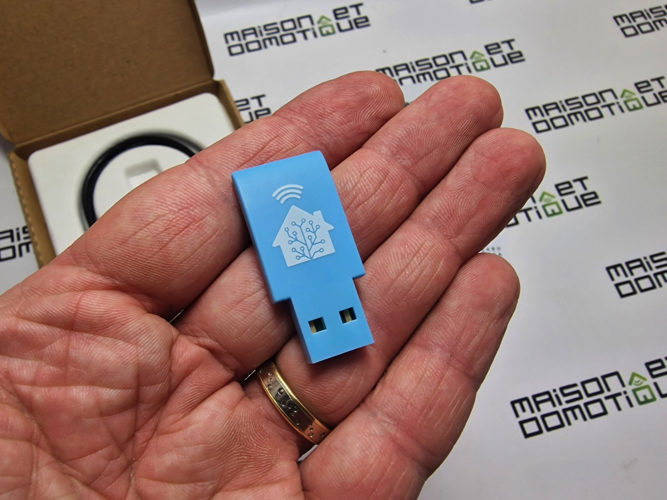
But in terms of performance, we're clearly a step above other home automation boxes on the market or a Raspberry Pi. And if you opt for virtualization, it will be possible to host multiple services on it, not just the home automation system (for example, the Adguard ad blocker, the Vaultwarden password manager, etc.). This is the whole point, making this mini PC truly economical to use! Conclusion
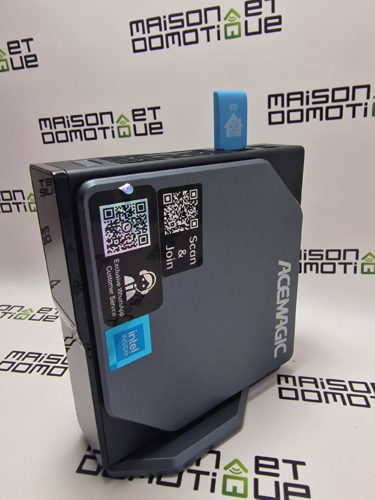
This mini computer is a great surprise! It's a format that's become widely available, but not all models are created equal, and for some, the price is far from low… Here we have a high-performance model, available in several possible configurations, and easily upgradeable if necessary. Its LCD screen and small LED border are two very nice touches for those with a geeky side like me :)
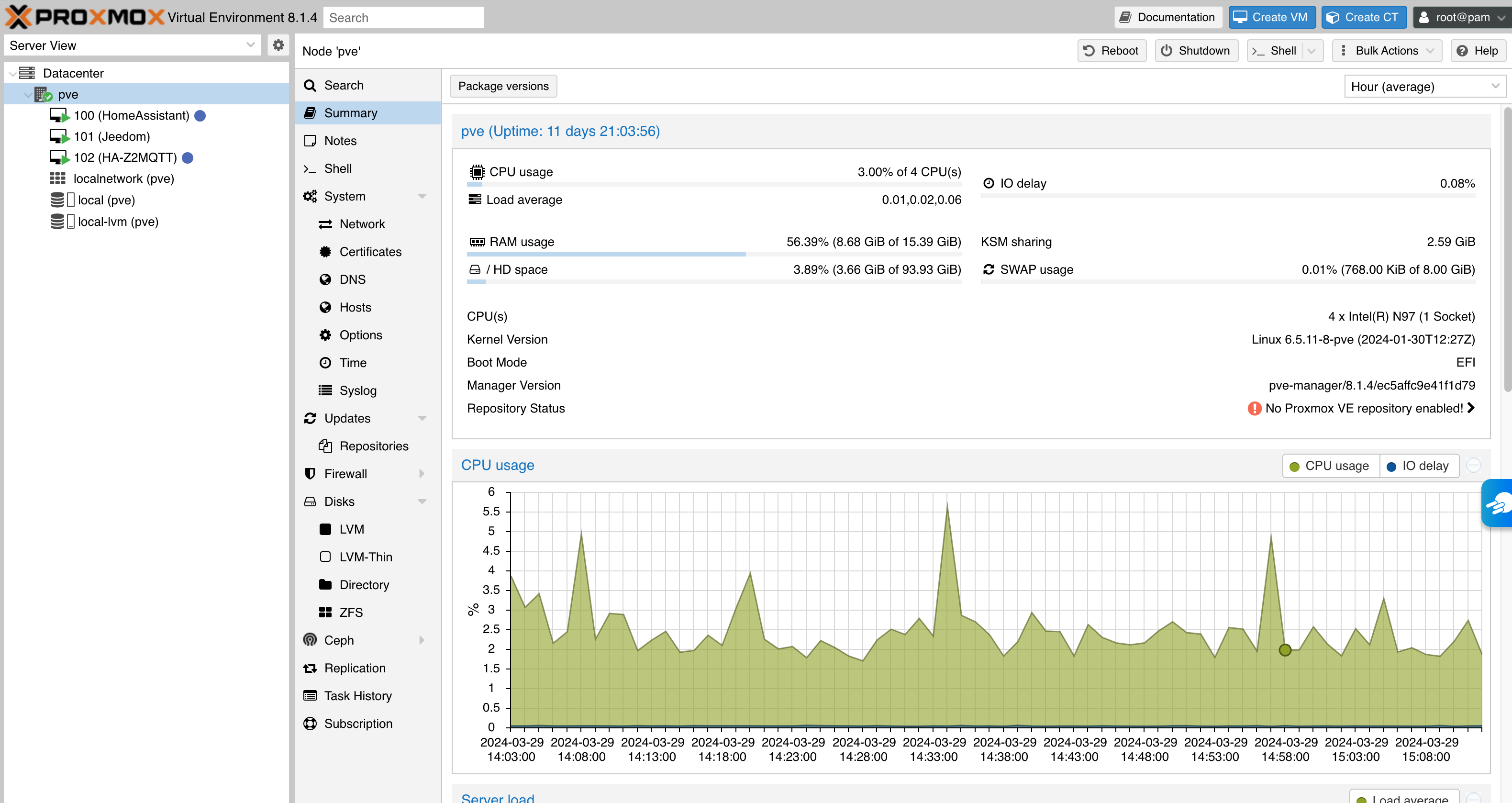
Due to its configuration and connectivity, you can imagine doing a lot of things with this mini PC: an office PC for work, of course, but also an audio/video multimedia box, a home automation box, a Proxmox server to host various services, a router, a firewall, etc. There's plenty to choose from!
And at €202 right now , thanks to the code 5T6GJG85, honestly it's a great deal! My only regret? That the LCD screen is only usable under Windows. It would have been great to be able to use it to display the load of virtual machines, information from home automation sensors, the cover or title of the song currently playing on a media server, etc. Let's hope that drivers for systems other than Windows will be available. Apart from this detail, it's a great mini computer!


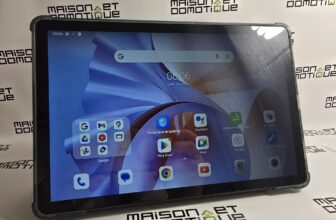


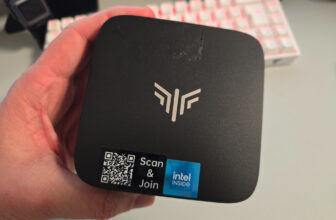

Please remain courteous: a hello and a thank you cost nothing! We're here to exchange ideas in a constructive way. Trolls will be deleted.